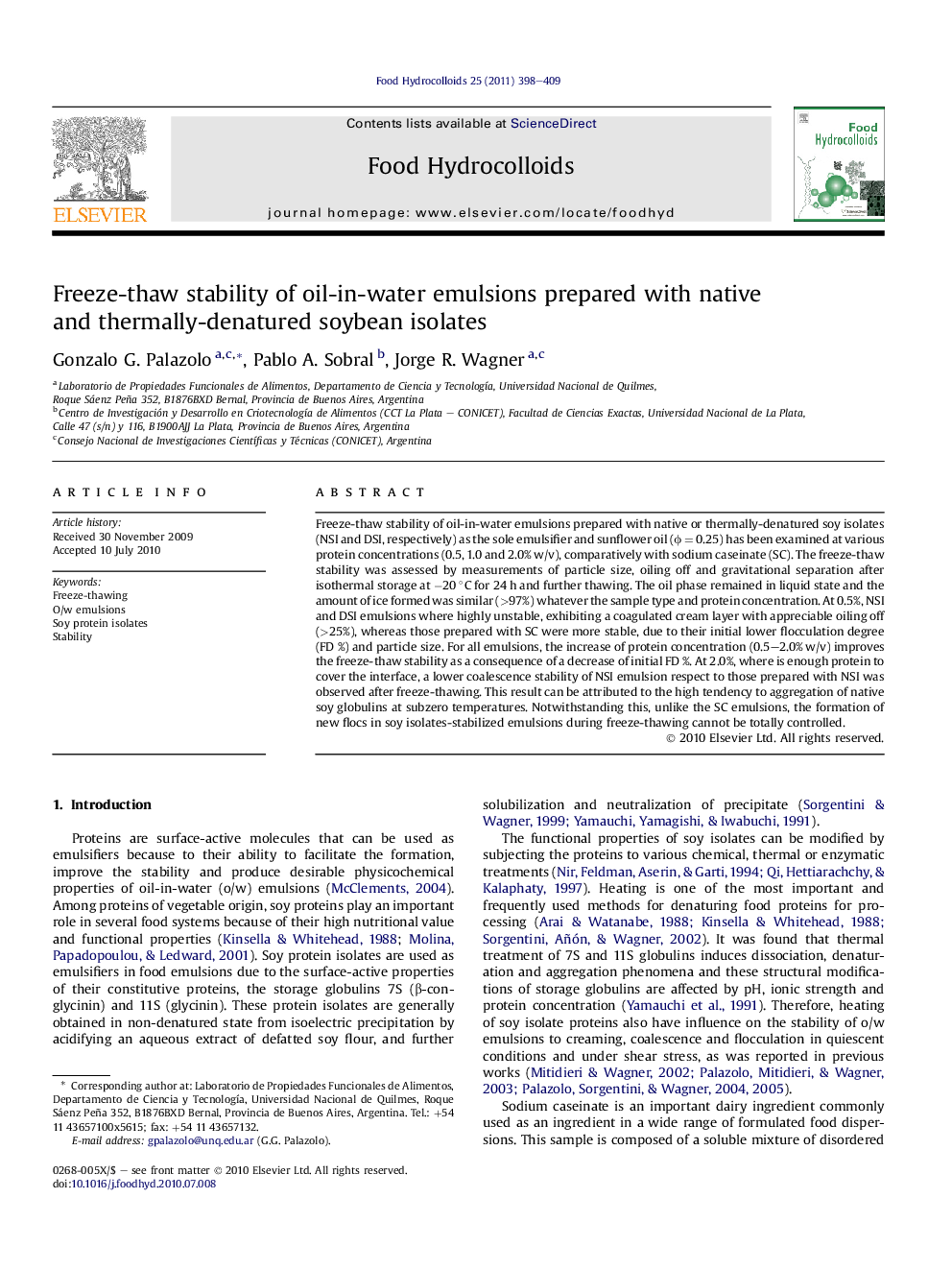| Article ID | Journal | Published Year | Pages | File Type |
|---|---|---|---|---|
| 604467 | Food Hydrocolloids | 2011 | 12 Pages |
Freeze-thaw stability of oil-in-water emulsions prepared with native or thermally-denatured soy isolates (NSI and DSI, respectively) as the sole emulsifier and sunflower oil (ϕ = 0.25) has been examined at various protein concentrations (0.5, 1.0 and 2.0% w/v), comparatively with sodium caseinate (SC). The freeze-thaw stability was assessed by measurements of particle size, oiling off and gravitational separation after isothermal storage at −20 °C for 24 h and further thawing. The oil phase remained in liquid state and the amount of ice formed was similar (>97%) whatever the sample type and protein concentration. At 0.5%, NSI and DSI emulsions where highly unstable, exhibiting a coagulated cream layer with appreciable oiling off (>25%), whereas those prepared with SC were more stable, due to their initial lower flocculation degree (FD %) and particle size. For all emulsions, the increase of protein concentration (0.5–2.0% w/v) improves the freeze-thaw stability as a consequence of a decrease of initial FD %. At 2.0%, where is enough protein to cover the interface, a lower coalescence stability of NSI emulsion respect to those prepared with NSI was observed after freeze-thawing. This result can be attributed to the high tendency to aggregation of native soy globulins at subzero temperatures. Notwithstanding this, unlike the SC emulsions, the formation of new flocs in soy isolates-stabilized emulsions during freeze-thawing cannot be totally controlled.
Graphical abstractFigure optionsDownload full-size imageDownload as PowerPoint slide
